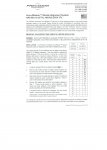Got my Armalite M15 A4 back from a gunsmith to have a thread adapter and SureFire 556 QD mount attached. Sent it off because the headstock on my lathe is too long to for a 20" barrel and I detest turning between centers because I can't indicate an erratic bore. Job looked good, set up a 3 foot by 3 foot target, reattached the scope with the QD mount that has brought me back to at least 1 moa if not better every other time I remove/reinstall it. Bore sight with the eyeball (as if you can see the tolerances being dealt with here) and everything appears good. Send one round downrange; cant see a hit. Send one more, same thing. Walk downrange, and there is nothing on the target. Nothing. Get a sinking feeling in my stomach and hobble back to the firring point and take off the can, and....nothing. No baffle strikes, no end cap strikes. Check to see that Federal did indeed put powder, primer, and bullets in the cases - yep, they did. Stop and go home.
Can't use boresighter because the QD is glued on with RockSett (I guess, because I can't get it off). Start looking at the muzzle brake/suppressor mount, and here is what I see:


The exit bore of the brake is .250". Considering opening to .275 at least. Opinions?
ADD: I gave the suppressor another good hard look. I can see a couple of baffles that look like the carbon buildup was brushed by the bullets. The most I can tell until I figure out a better way to see inside. Nothing on the endcap.
Sent from my iPad using Tapatalk HD
Can't use boresighter because the QD is glued on with RockSett (I guess, because I can't get it off). Start looking at the muzzle brake/suppressor mount, and here is what I see:


The exit bore of the brake is .250". Considering opening to .275 at least. Opinions?
ADD: I gave the suppressor another good hard look. I can see a couple of baffles that look like the carbon buildup was brushed by the bullets. The most I can tell until I figure out a better way to see inside. Nothing on the endcap.
Sent from my iPad using Tapatalk HD
Last edited:


